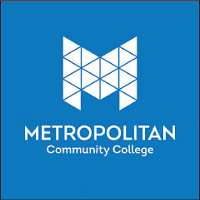Below is a summary of the abstract you submitted. Presenting author(s) is shown in bold.
If any changes need to be made, you can modify the abstract or change the authors.
You can also download a .docx version of this abstract.
If there are any problems, please email Dan at dar78@pitt.edu and he'll take care of them!
This abstract was last modified on March 30, 2025 at 3:43 p.m..

Learning, exploring, and discovering new bacteriophages will result in a better understanding of phages, host bacteria, and their genomics. Researchers will also be able to significantly contribute to and improve the biomedical field as well as many other areas, such as agriculture, environmental sanitation, and food safety with the knowledge gained from studying phage biology and linked disciplines. However, without the contributions from numerous scientists and researchers, improvement would be impossible in this direction. The SEA-PHAGES program of Howards Hughes Medical Institute is one of the premier initiatives working towards uncovering the information phages may hold. In a partnership, this research project was conducted at Metropolitan Community College (MCC) of Omaha, Nebraska in the Fall of 2024 to study the procedures of finding a novel phage.
Shreeya Etigi collected multiple soil samples from Elkhorn areas, including one from the creek near 1851 Blue Sage Parkway (41.2402017, -96.2387622), Elkhorn, NE, one from bank of Lawrence Youngman Lake Boat Ramp (41.2682459, -96.2202030), Elkhorn, NE, and one from her backyard lawn. This particular phage eventually named MallowireSE against host bacteria Gordonia rubripertincta, was found from the Blue Sage parkway creek sample.
Rhana Kang, Shreeya, Laliana Rivera and Leonardo (Leo) Suarez Bolanos completed the following procedures of phage isolation and characterization. Isolation was done to acquire direct and enriched isolates, followed by procedures to test whether the samples contained phages or not through plaque assays and spot tests. Once the phage presence was confirmed, it was purified through the use of serial dilution and plaque assays. Separate plaques were collected for the purification of two different phage populations initially. This particular phage MallowireSE was worked on by Rhana and Leo for the rest of the procedures. The phage titer amount was amplified up to 12.5ul of the 10^-1 dilution using Webbed plating technique. Next, the phage DNA was extracted and characterized. The phage sample was also sent to University of Nebraska Medical Center (UNMC) for electron microscope (EM) imaging to gain a better understanding of the phage’s morphology. From EM imaging results the phage morphology turned out to be that belonging to Siphoviridae family. At the end of this research, the phage was named MallowireSE and added to the phagesDB.org database. In the future, Rhana and Shreeya’s goal is to work on the sequenced DNA/ genome of MallowireSE to annotate this phage’s genes using different Bioinformatics tools and submit it to GenBank.
